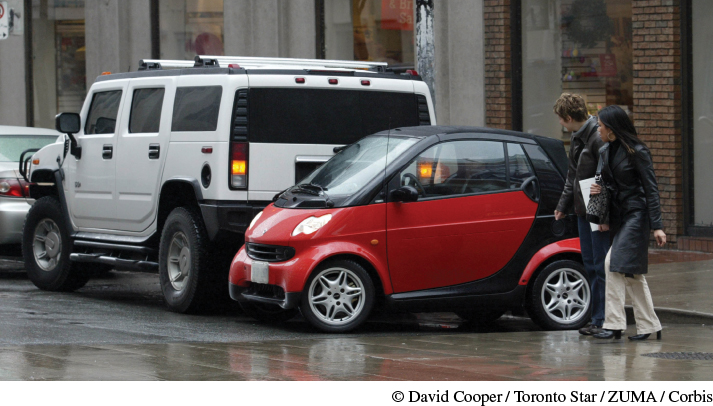The Problems of Pollution
Printed Page 986
Important EventsThe Problems of Pollution
By the early years of the twenty-first century, industrial growth continued to threaten the environment. The 1986 nuclear explosion at Chernobyl had killed thirty-one people instantly (see “Collapse of Communism in the Soviet Bloc” in Chapter 28) in the aftermath, levels of radioactivity rose for hundreds of miles in all directions and some fifteen thousand people perished over time from the effects of radiation. Moreover, as Russia opened up, it became clear that Soviet managers and officials had thrown toxic waste into thousands of square miles of lakes and rivers. Used nuclear fuel had been dumped in neighboring seas, and many nuclear and other tests had left entire regions of Asia unfit for human, animal, and plant life.
Other environmental problems had devastating global effects. Pollutants from fossil fuels such as natural gas, coal, and oil mixed with atmospheric moisture to produce acid rain, a poisonous brew that destroyed forests in industrial areas. In eastern Europe, the unchecked use of fossil fuels turned trees into brown skeletons and inflicted ailments such as chronic bronchial disease on children. In other areas, clearing the world’s rain forests to develop the land for cattle grazing or for cultivation of cash crops depleted the global oxygen supply. By the late 1980s, scientists determined that the use of chlorofluorocarbons (CFCs), chemicals found in aerosol and refrigeration products, had blown a hole in the earth’s ozone layer, the part of the blanket of atmospheric gases that prevents harmful ultraviolet rays from reaching the planet.
Simultaneously, automobile and industrial emissions of chemicals were infusing that thermal blanket. The buildup of CFCs, carbon dioxide, and other atmospheric pollutants produced what is known as a greenhouse effect that results in global warming, an increase in the temperature of the earth’s lower atmosphere. Already in the 1990s, the Arctic pack ice was breaking up, and scientists predicted that global ice melting would raise sea levels by more than ten inches by 2100, flooding coastal areas, disturbing fragile ecosystems, and harming the fresh water supply. In 2012, important island nations such as the Maldives were menaced with disappearance because of rising water levels. Other results of the greenhouse effect included climatic extremes such as drought, drenching rain, and increasingly catastrophic weather events such as deadly storms.
Activism against unbridled industrial growth took decades to develop as an effective political force. Rachel Carson’s powerful critique Silent Spring (1962) advocated the immediate rescue of rivers, forests, and the soil from the ravages of factories and chemical farming in the United States. In West Germany, environmentalism united members of older and younger generations around a political tactic called citizen initiatives, in which groups of people blocked plans for urban growth that menaced forests and farmland. In 1979, the Green Party was founded in West Germany; two decades later Green Party candidates across Europe forced other politicians to voice their concern for the environment. (See “Document 29.2: The Green Parties Unite Transnationally and Announce Common Goals.”)
Spurred by successful Green Party campaigns, Europeans attacked environmental problems on local and global levels. Some European cities—Frankfurt, Germany, for example—developed car-free zones, and in Paris, whenever automobile emissions reached dangerous levels, cars were banned from city streets until the emission levels fell. The Smart car, a very small car using reduced amounts of fuel, became fashionable in Europe. European cities also developed bicycle lanes on major city streets, with some U.S. cities following their lead. To reduce dependence on fossil fuels, parts of Europe developed wind power to such an extent that 20 percent of some countries’ electricity was generated by wind. Many cities in the West undertook extensive recycling of waste materials. By 1999, some eighty-four countries, including EU members, had signed the Kyoto Protocol, an international treaty whose signatories agreed to reduce their levels of emissions and other pollutants to specified targets. However, the United States, the world’s second leading polluter after China, failed to ratify this agreement, suggesting that the West was fragmenting over values.
